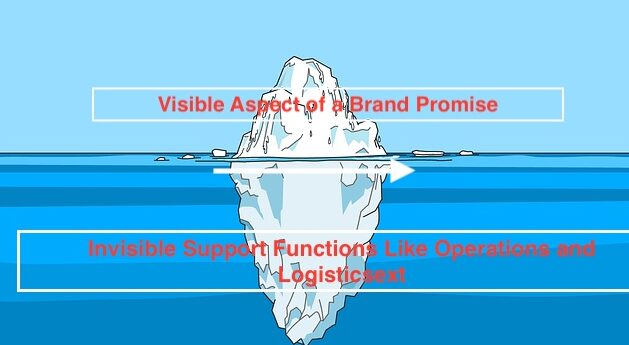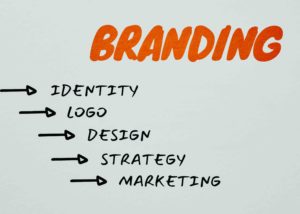Definition

A brand promise is not a tagline. A tagline is a catchy phrase that may say or mean nothing.
A brand promise is simply HOW you will sell your WHAT to your WHO.
The WHO is your core customer who will buy from you because you are accurately meeting their needs.
The WHAT is your unique product or service that aligns with your core competencies or what you know how to do very well and even better than the competition.
The HOW is your brand promise. It is a statement of how you will deliver on your promise. This HOW must be uniquely different and also measurable.
There are Five Key Steps to Uncovering Your Brand Promise; namely,
Step 1: Decide on your sandbox: the WHAT and WHERE you will sell and your distribution channel.
Step 2: identify your WHO. The core customer you can’t live without.
Step 3: Know their needs; Focus on needs not wants.
Step 4: Understand WHAT you can deliver. What you’re uniquely qualified to deliver.
Step 5: Determine your Brand Promise. HOW you will sell your WHAT to your WHO
Your HOW must be unique and measurable and must meet your core customers’ needs or else it is just a tagline.
You must get your promise right. It is this promise that will unlock growth and profit. Your brand promise is what differentiates you and your brand from being just a commodity.
Additionally, you must answer these 7 questions:
- What are your company’s core values?
- What is your Unique Selling Proposition?
- What are the expectations of your target audience; the Who above?
- What is your brand purpose? Note: Brand purpose and brand promise do not mean the same thing.
- Are your employees conversant with your brand promise?
- Do your customers value your promise?
- Is your promise integrated with every aspect of your business?
Similarities Between a Marriage Vow and a Brand Promise:
A brand promise is like the marriage vow exchanged between a couple where you “promise to love and cherish your spouse, in good times and bad, to be with your spouse and support your spouse’s dreams and aspirations and to create a home filled with love and happiness.”
Like a marriage vow, your promise must be authentic. It must be built on trust. It must differentiate your spouse from others in your estimation.
Your marriage vow, being much like a brand promise is what shapes your relationship with your spouse. It is what sets your spouse’s expectations of you.
How to Know that Your Brand Promise is Right:
Number 1: Does it differ in the marketplace and align with your core competencies?
Number 2: It is helping your sales team to close deals quicker with a higher conversion rate?
Number 3: It is getting the sales operations and delivery teams more closely aligned together?
Number 4: Does it help to guide decision-making around services and products?
Note: Eventually, all brand promises will revert to being a commodity. The useful life of your brand promise is as long as it is working. When it becomes generic and the same promise is offered by everyone in your market segment or market niche, then it is time to craft another uniquely different brand promise that will differentiate you from the competition. When it is not helping the sales team to close deals, then it is time to get another one.
Importance of a brand promise in marketing and branding
The importance of a brand promise in marketing and branding lies in its ability to serve as a foundational element that shapes the perception of your brand, builds trust with consumers, and drives customer loyalty.
Here’s a breakdown of its significance:
Defines Brand Identity: Brand loyalty, brand awareness, brand association, and brand perceived value are the main components of your brand equity. Brand consistency builds brand trust and brand trust builds brand loyalty and brand loyalty leads to repeat patronage.
For all of the above to sync, you must encapsulate them in your Unique Selling Proposition (USP).
Take Rolex as an example. Rolex brand logo is a 5-pointed crown with green crown and gold lettering giving the brand instant recognition, even without the brand name.
Rolex’s promise includes quality, accurate timeliness, hand craftmanship, limited availability, and high price. Over the years, it has succeeded in creating an uncommon brand identity because of the constancy in everything it does.
Creates Consistency: An effective brand promise helps create consistency across all touchpoints from production, through quality checks and controls, to product packaging, shipping, and all other aspects of logistics till delivery to your customers and post-delivery customer experience.
Consistency breeds familiarity. Familiarity breeds trust in the reliability of your brand. Reliability ensures repeat purchases of your brand.
Builds Trust and Credibility: Trust is the foundation for building and sustaining credibility and what you promise is what your customer will get.
A brand promise of next-day delivery that is consistently kept, creates trust and reliability. This builds brand equity and goodwill in your offer that can help you charge a premium price compared to the competition.
Differentiates from Competitors: In today’s marketplace, the consumer is faced with a plethora of choices of similar products or brands. Take for instance toothpaste. Some strong brands include Close-up, Colgate, Crest, Aquafresh and many more. However, with a unique and effective brand promise that you must deliver, you can create differentiation for your brand within your market segment or market niche.
Take Volvo for instance, its brand promise emphasizes the safety features of its brand. Quality, safety, environmental care, and aesthetics are its core brand promise.
Shapes Brand Perception: Your brand promise shapes your brand perception. Take Rolex watches for instance. Despite its high price, it is perceived as a brand with very high quality, precision timing, exclusivity, and limited availability. Exclusivity and limited availability help create a sense of prestige in its ownership,
Drives Customer Loyalty and Advocacy: An effective and consistent brand promise that is kept without fail, will drive customer loyalty. Loyal customers repeat their patronage again and again.
Satisfied customers tell their friends and acquittances and as word of mouth is the best form of advertisement, your brand will enjoy growth.
Guides Strategic Decision-Making: Strategic decisions are those decisions a company makes for their long-term benefits to the business. A strategic decision focuses on how best to achieve the goals and objectives of an enterprise.
Take FedEx for instance. Its Brand promise is “Delivered on time, every time.”
Its logistics plans and management will therefore be based on the promise to deliver parcels on time and every time.
Staff recruitment and training will be based on this brand promise.
Delivery trucks’ purchases and length of use before replacement will be influenced by this brand promise.
Software development for logistics management will be influenced by FedEx’s brand promise.
Therefore a brand promise is not a tagline because a tagline is a catchy phrase that may say or mean nothing. A brand promise is simply an effective HOW statement of both your tactical and strategic plan for delivering on your promise.
II. Understanding Brand Promise
B. Components of a Brand Promise
Value Proposition: Your value proposition is a statement of what your brand can do for your target customers. How will your brand meet the needs of your target audience? How will you communicate these benefits to the right audience? Why is your brand better than other competing brands? The concise answer to these questions constitutes your value proposition.
Unique Selling Proposition (USP): Your unique selling proposition is a thing of value that you have but your competitors do not have. It is this unique something of value that is exclusive to you that you express as your brand promise.
It could be superior quality than what the competition can offer.
It could be your pricing policy that cannot be matched by your competitors without the competition going out of business.
It could be your locational advantage, for instance, in mining.
It could be your technology that is protected by patent rights.
Any of this will set you apart and can qualify as your brand promise.
Apple is well known for its commitment to technological innovation and for its creativity in design, packaging and even advertising. So its brand promise that proclaims “Think Different” is a definite reflection of what Apple stands for all the time.
Brand Positioning: Your brand cannot be everything for everyone. There are five types of positioning; namely.
Marketing positioning: Coca-Cola positions itself as the ultimate refreshing beverage drink.
Product positioning: Apple’s iPhone is positioned as a premium smartphone loaded with cutting-edge technology, sleek design, user-friendly features, and much more.
Branding positioning: Nike positions itself as the brand of choice for professional athletes and even for aspiring regular people and as a fashion icon.
Price positioning: Walmart trumpets “everyday low price” in its advertising and all its operations and logistics are geared towards delivering on its brand promise.
Competitor-based positioning: Pepsi beverage drinks pits itself against Coca-Cola as an equal or even a better alternative beverage drink to Coca-Cola.
C. Significance of Aligning Brand Promise with Brand Identity
Making promises about your brand is not enough. Your brand promise must sync with your brand identity and your brand values. When your brand identity is in alignment with the promise you make about your brand to your customers, you create trust and authenticity that will translate to repeat patronage and word-of-mouth advocacy for your brand.
III. Examples of Successful Brand Promises:
A. Apple Inc.
- Analysis of Apple’s Brand Promise: Apple has three major product categories; namely, iPhones, MacBooks, and Apple Watches. Its promise is “Think Different”. As this example shows, a brand promise does not even have to mention the name of a product. But to think differently is to be original in your thinking; to be creative in what you do and to embrace innovation in products and service delivery. These are the core deliverables that Apple consistently reflects in everything Apple and its brand does.
B. Nike
Nike’s Brand Promise: Nike’s brand promise is “To bring inspiration and innovation to every athlete in the world.” And its famous tagline is “Just do It.”
In combination, its brand promise and its tagline work to inspire and empower both professional and amateur athletes and non-athletes to push their limits and achieve their goals. The brand can reach its audience at an emotional level.
Nike is all about determination, perseverance, and achievement. Skilfully, it has positioned itself as a brand that empowers its audience, pushing them to move beyond their barriers and self-limitations. This is reflected in various partnership deals with the likes of Apple, Beats by Dre, and CLOT.
Also, Nike has sponsorship deals with the likes of Michael Jordan (Air Jordan brand), Roger Federer, LeBron James, Maria Sharapova, and many more.
C. Coca-Cola
- Historical Evolution of Coca-Cola’s Brand Promise: Coca-Cola’s brand promise has evolved, but its essence has remained consistent: refreshment, happiness, and moments of joy. From its inception, Coca-Cola has positioned itself as more than just a beverage—it’s a symbol of shared moments, celebrations, and connections. Over the years, Coca-Cola has adapted its marketing strategies to reflect changing societal values while staying true to its timeless promise of spreading happiness.
IV. Importance of Consistency in Brand Promise
Consistency in delivering on a brand promise is paramount for several reasons. Let’s delve into why it matters:
A. The Role of Consistency in Brand Perception
Consistency is the glue that holds a brand’s identity together. When a brand consistently delivers on its promise across all touchpoints, it reinforces a clear and coherent brand image in the minds of consumers. Imagine if Apple suddenly started producing subpar products or if Nike’s messaging shifted away from empowerment—it would confuse consumers and erode trust in the brand. Consistency breeds familiarity and reliability, which are crucial for building strong connections with consumers.
Moreover, consistency in brand promise enhances brand perception. When consumers consistently experience what a brand promises—whether it’s quality, innovation, or customer service—they develop positive associations with the brand. These positive perceptions not only strengthen brand loyalty but also act as a barrier against competitive offerings. Consistency creates a sense of trustworthiness, authenticity, and reliability, which are essential for long-term success in the marketplace.





